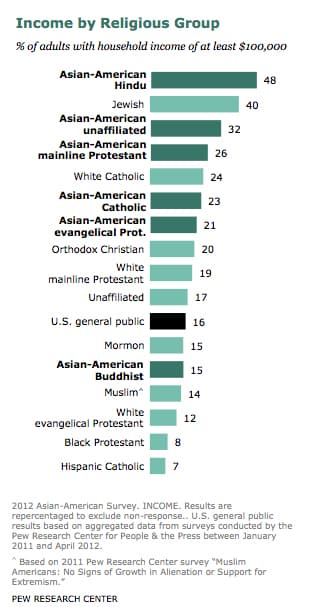Indian-Americans Report $145,000 Median Household Income Amidst Shifting Political Perceptions

Indian-Americans continue to demonstrate exceptional socioeconomic success in the United States, with a median household income of $145,000 in 2022, significantly surpassing other demographic groups. This data-driven performance has historically appealed to various political segments, yet a recent observation highlights a surprising shift in perception. As one social media user, "i/o," noted in a tweet, > "For years, I've tweeted stats on the performance of immigrant groups in the US. This data-based approach was appealing to a lot of people on the right. So imagine my surprise when the highest-performing group of all (Indian-Americans) became their biggest villain." This sentiment points to an evolving narrative surrounding the community's achievements.
The community, comprising approximately 4.8 million individuals, accounts for 1.5% of the U.S. population but contributes an estimated 5-6% of the nation's income tax. Their success is largely attributed to high educational attainment, with 77% of Indian-Americans aged 25 and older holding a bachelor's or advanced degree, a figure well above the national average. Indian-born executives lead major technology companies like Google and Microsoft, and they have founded or co-founded 72 out of 358 U.S. unicorns since 2018, according to The Globalist.
Despite these significant contributions, a growing backlash against Indian-Americans has been observed, particularly from certain conservative factions. This shift is fueled by what some describe as "cultural jealousy" and concerns about their "disproportionate influence" in critical sectors, as reported by TimesLife.com. Discussions around stricter H-1B visa policies and Optional Practical Training (OPT) programs, often championed by the "MAGA movement," disproportionately affect Indian professionals and students, suggesting a move to prioritize domestic labor. This increasingly critical stance contrasts with previous acknowledgments of their economic prowess.
The evolving political landscape sees Indian-Americans predominantly aligning with the Democratic Party, with 68% of registered voters identifying or leaning Democratic, according to Pew Research. However, recent surveys indicate a slight erosion of this support among certain demographics, with some younger Indian-Americans showing increased leanings towards the Republican Party, as per Carnegie Endowment research. This complex political dynamic further complicates the perception of a group whose economic success is undeniable but whose integration into the broader societal narrative faces new challenges.